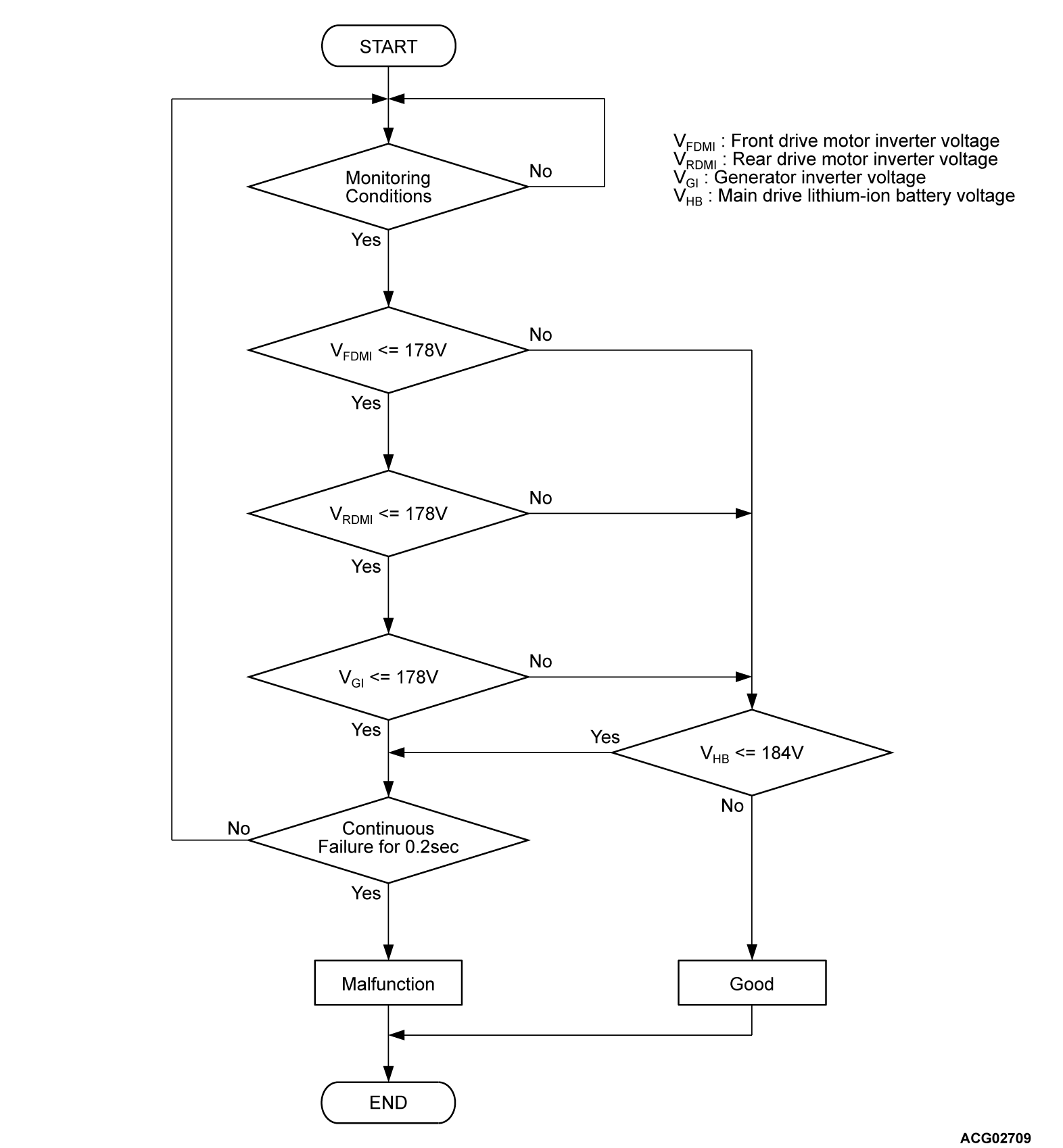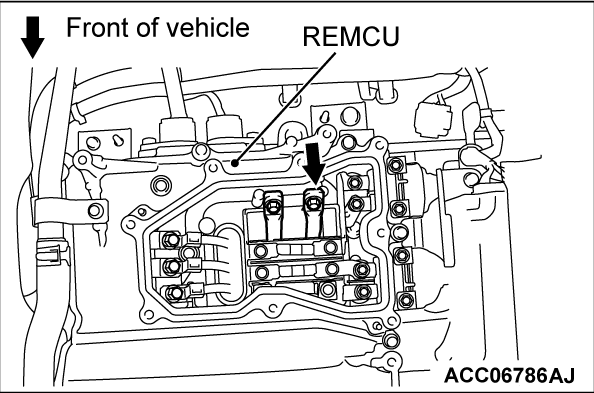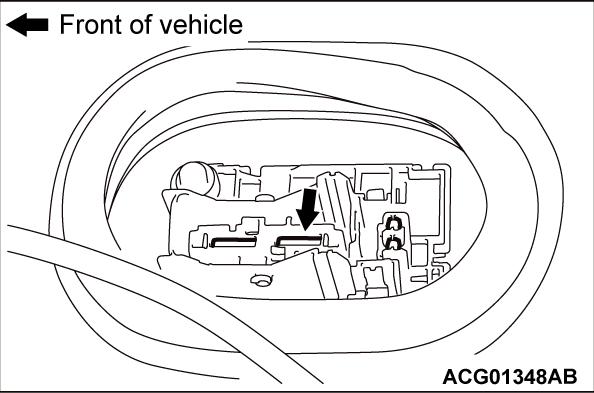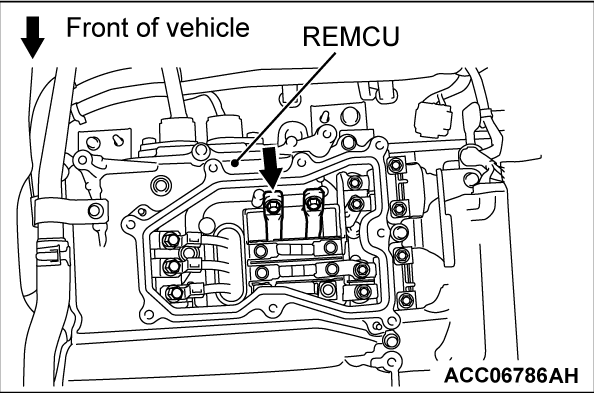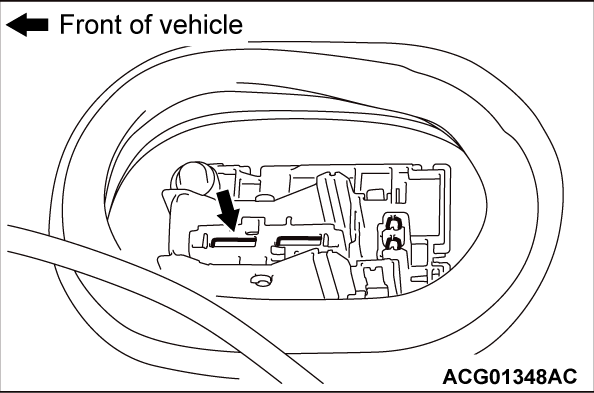DTC P0AFA: Hybrid battery voltage low
| danger |
| caution | If there is any problem in the CAN bus lines, an incorrect DTC may be set. Prior to this diagnosis, diagnose the CAN bus lines (Refer to GROUP 54C - CAN Bus Diagnostics Table  ). ). |
MONITOR EXECUTION
Continuous
MONITOR EXECUTION CONDITIONS (Other monitor and Sensor)
Other Monitor (There is no temporary DTC stored in memory for the item monitored below)
- EV-CAN monitor
- Main drive lithium-ion battery voltage sense circuit monitor
- Battery-CAN monitor
- Front electric motor control unit (FEMCU) inverter voltage monitor
- Rear electric motor control unit (REMCU) inverter voltage monitor
- Generator control unit (GCU) inverter voltage monitor
Sensor (The sensor below is determined to be normal)
- Front electric motor control unit (FEMCU) inverter voltage sensor
- Rear electric motor control unit (REMCU) inverter voltage sensor
- Generator control unit (GCU) inverter voltage sensor
Check Conditions
- When the vehicle is in the charging mode
Judgment Criterion
- When a state with the voltage of each condenser (built in the FEMCU, GCU and REMCU) being 178 volts or less continues for 0.2 seconds while the main drive lithium-ion battery is being charged
- When a state with the voltage of the main drive lithium-ion battery being 184 volts or less continues for 0.2 seconds while the main drive lithium-ion battery is being charged
PROBABLE CAUSES
- The high-voltage circuit fails.
- Blown high-voltage fuse.
- Main contactor energization circuit fails.
- Malfunction of the power drive unit (FEMCU).
- Malfunction of the main contactor.
DIAGNOSIS
Required Special Tools
- MB991223: Wiring harness set
- MB992006: Extra fine probe
STEP 1. Using scan tool (M.U.T.-IIISE), check whether the other DTC is set.
Check if DTC P0C78 is set in the PHEV-ECU.
Is the DTC set?
STEP 2. Check the wiring harness for open circuit (PHEV-ECU connector and the main drive lithium-ion battery connector)
Check the wiring harness between PHEV-ECU connector (terminal CNT+) and the main drive lithium-ion battery connector (terminal No.6).
Is the check result normal?
STEP 3. Check the wiring harness for damage between D-33 main drive lithium-ion battery connector (terminal No.4) and the body ground.
STEP 4. Check the main drive lithium-ion battery main contactor (P) and (N) <On-vehicles check>.
Check resistance of main contactor (P) and (N) coil with harness connector (Refer to GROUP 54Dc - On-vehicles Service, Check on Coil Resistance of Contactor  ).
).
 ).
).Is the check result normal?
STEP 5. Check the high-voltage fuse.
| danger |
|
Is the check result normal?
STEP 6. Check the high-voltage circuit.
| danger |
|
Check whether the high-voltage wiring harness is connect securely or damaged.
Is the check result normal?
STEP 7. Check the high-voltage circuit.
| danger |
|
(2) Apply a voltage of 12 volts to the CNT- terminal to turn on the charging contactor.
(3) Connect a high-voltage compatible multimeter between the main drive lithium-ion battery high-voltage terminal (REMCU) and the main drive lithium-ion battery service plug rear terminal.
OK: Approximately 100 - 164 volts
(4) Apply a voltage of 12 volts to the CNTP terminal to turn on the charging contactor.
(5) Connect a high-voltage compatible multimeter between the main drive lithium-ion battery high-voltage terminal (REMCU) and the main drive lithium-ion battery service plug front terminal.
OK: Approximately 100 - 164 volts
(6) Apply a voltage of 12 volts to the CNT+ terminal to turn on the charging contactor.
(7) Connect a high-voltage compatible multimeter between the main drive lithium-ion battery high-voltage terminal (REMCU) and the main drive lithium-ion battery service plug front terminal.
OK: Approximately 100 - 164 volts
Is the check result normal?
![[Previous]](../../../buttons/fprev.png)
![[Next]](../../../buttons/fnext.png)
